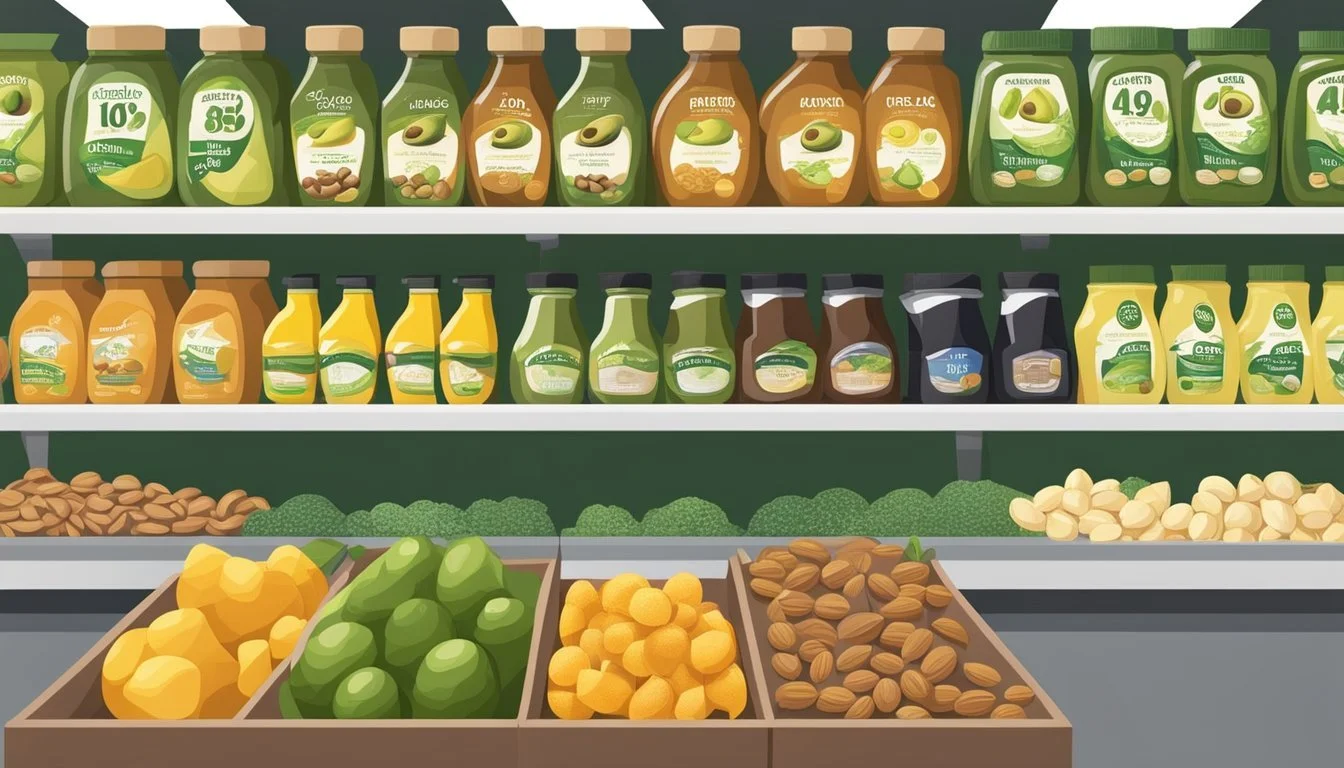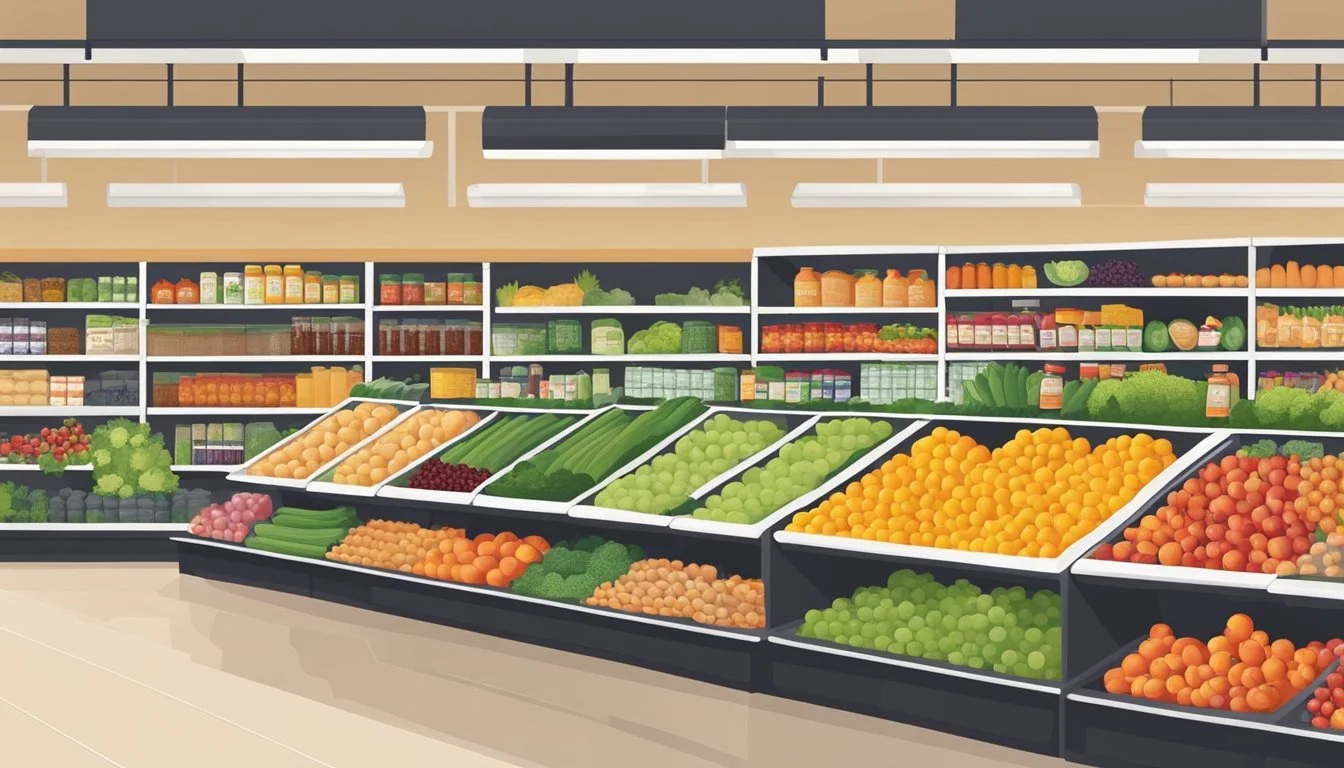Clean Eating Paradise: Top Grocery Stores for Wholesome, Unprocessed Foods
Clean eating has become increasingly popular as people seek to improve their health through better nutrition. Choosing the right grocery store can make a significant difference in accessing high-quality, unprocessed ingredients. Wegmans stands out as one of the best grocery stores for clean eating, offering a wide range of organic and health-focused options.
When shopping for clean eating, look for stores that prioritize fresh produce, whole grains, and minimally processed foods. Many grocery chains now offer expanded organic sections and private-label health food lines. Stores like Trader Joe's provide affordable organic options, while Costco offers bulk purchases of healthy staples for those feeding larger households.
The ideal grocery store for clean eating should have clear labeling systems to identify foods suitable for various dietary needs. This includes markers for gluten-free, lactose-free, and heart-healthy options. A good selection of fresh fruits and vegetables, lean proteins, and whole grains forms the foundation of a clean eating shopping list.
Understanding Clean Eating
Clean eating focuses on consuming whole, minimally processed foods. This approach emphasizes nutritious ingredients that are as close to their natural state as possible.
The foundation of clean eating includes fruits, vegetables, whole grains, lean proteins, and healthy fats. These foods provide essential vitamins, minerals, and fiber.
Processed foods with artificial additives, preservatives, and refined sugars are typically avoided in clean eating. Instead, the focus is on natural, unrefined ingredients.
Protein sources in clean eating often include lean meats, fish, eggs, legumes, and plant-based options. Carbohydrates come from whole grains, fruits, and vegetables.
Healthy fats are an important part of clean eating. Sources include avocados, nuts, seeds, and olive oil.
A clean eating food list might include:
Whole grains (quinoa, brown rice, oats)
Lean proteins (chicken, fish, tofu)
Legumes (beans, lentils)
Nuts and seeds
Healthy oils
Clean eating for beginners starts with reading ingredient labels and choosing foods with recognizable components. It involves cooking more meals at home using whole ingredients.
This approach to eating can support overall health and wellness by providing nutrient-dense foods and reducing intake of processed ingredients.
Selecting Produce for Clean Eating
Clean eating starts with choosing the right produce. Focusing on fresh fruits and vegetables, understanding organic options, and considering seasonality are key to building a nutritious cart.
Focusing on Fruits and Vegetables
Fruits and vegetables form the foundation of clean eating. Fill your cart with a variety of colorful produce to ensure a wide range of nutrients. Leafy greens like spinach, kale, and Swiss chard are packed with vitamins and minerals. Berries, citrus fruits, and apples offer antioxidants and fiber.
Choose whole fruits over pre-cut options to avoid added preservatives. Look for firm, unblemished produce without soft spots or mold. Aim for a mix of starchy and non-starchy vegetables to balance your meals.
Consider frozen fruits and vegetables as a convenient alternative. They're often picked at peak ripeness and flash-frozen, retaining their nutritional value.
Identifying Organic and Pesticide-Free Options
Organic produce is grown without synthetic pesticides or fertilizers. While not all organic food is pesticide-free, it typically contains lower residue levels.
The "Dirty Dozen" list highlights fruits and vegetables with the highest pesticide residues. These include strawberries, spinach, kale, nectarines, and apples. Prioritize organic options for these items when possible.
Look for labels like "USDA Organic" or "100% Organic" for certified products. Some smaller farms may use organic practices without certification. Ask about their growing methods at farmers markets or local stands.
Seasonality and Locality Benefits
Seasonal, local produce often tastes better and may have higher nutritional value. Fruits and vegetables picked at peak ripeness retain more vitamins and minerals.
Shopping at farmers markets supports local agriculture and reduces transport-related environmental impact. It also allows for direct communication with growers about their practices.
Seasonal eating introduces variety to your diet throughout the year. Spring offers tender greens and asparagus. Summer brings tomatoes and berries. Fall harvests include squash and apples. Winter provides hearty root vegetables and citrus fruits.
Consider joining a Community Supported Agriculture (CSA) program for regular deliveries of local, seasonal produce. This supports farmers and encourages exploration of new fruits and vegetables.
Protein Choices for Clean Eating
Selecting high-quality protein sources is crucial for a clean eating regimen. The right choices can provide essential nutrients while aligning with clean eating principles.
Meat and Seafood Selections
Grass-fed beef stands out as a top choice for clean eating. It offers a better nutrient profile compared to conventional beef. Wild-caught fish like salmon, mackerel, and sardines are excellent sources of omega-3 fatty acids.
Humanely raised chicken and turkey provide lean protein options. Look for organic or free-range varieties when possible. Bison and venison are lean game meats that fit well into a clean eating plan.
When selecting seafood, opt for sustainably sourced options. Cod, halibut, and trout are versatile choices. Avoid farmed fish treated with antibiotics or hormones.
Plant-Based Proteins
Legumes form the cornerstone of plant-based protein options. Lentils, chickpeas, and black beans are nutrient-dense and fiber-rich.
Nuts and seeds offer protein along with healthy fats. Almonds, walnuts, chia seeds, and hemp seeds are excellent choices.
Quinoa stands out as a complete protein source among grains. It contains all nine essential amino acids.
Tofu and tempeh, made from soybeans, are versatile protein options. Choose organic varieties to avoid genetically modified soybeans.
Eggs and Dairy Considerations
Eggs from pasture-raised hens are a nutritious protein source. They contain higher levels of omega-3 fatty acids and vitamins compared to conventional eggs.
When it comes to dairy, opt for organic, grass-fed options. Greek yogurt provides a protein-rich choice with probiotics. Cottage cheese is another high-protein dairy option.
For those who tolerate dairy well, organic milk and cheese can be part of a clean eating plan. Choose full-fat versions, as they are less processed than their low-fat counterparts.
Grains and Bakery
Clean eating emphasizes whole, minimally processed foods. For grains and bakery items, this means prioritizing nutrient-dense whole grains and carefully selecting breads and cereals.
Whole Grains and Gluten-Free Options
Quinoa, brown rice, and oats are excellent whole grain choices rich in fiber and nutrients. Look for brands like Bob's Red Mill that offer a wide variety of whole grain options.
For those avoiding gluten, rice, millet, and buckwheat are nutritious alternatives. Many stores now stock gluten-free pasta made from chickpeas or lentils, providing protein and fiber.
When shopping for flour, opt for whole wheat or almond flour instead of refined white flour. These choices retain more nutrients and fiber.
Healthy Bread and Cereal Selections
Dave's Killer Bread offers organic, non-GMO options packed with whole grains and seeds. Ezekiel bread, made from sprouted grains, is another nutrient-dense choice.
For cereals, look for varieties with minimal added sugars and high fiber content. Brands like Nature's Path and Barbara's provide wholesome options.
Avoid breads with long lists of additives or preservatives. Instead, choose loaves with simple, recognizable ingredients. Some stores, like Wegmans, clearly label heart-healthy or gluten-free options.
When selecting granola or muesli, check for versions low in added sugars and high in nuts and seeds for a nutritious breakfast or snack option.
Healthy Fats and Oils
Incorporating healthy fats and oils into your clean eating grocery list is essential for overall health and wellness. These nutrient-dense options provide important benefits when consumed in moderation as part of a balanced diet.
Choosing Heart-Healthy Fats
Avocados are an excellent source of monounsaturated fats and can be enjoyed on their own or as a spread. Nuts and seeds like almonds, walnuts, chia seeds, and flaxseeds offer omega-3 fatty acids and protein.
Fatty fish such as salmon, mackerel, and sardines provide heart-healthy omega-3s. When selecting eggs, opt for omega-3 enriched varieties for added nutritional benefits.
Full-fat dairy products like Greek yogurt and cheese can be included in moderation, providing calcium and protein along with healthy fats.
Grass-fed beef contains higher levels of omega-3s compared to conventionally raised cattle.
Navigating Oils and Fat Content
Extra virgin olive oil is a staple for clean eating, rich in monounsaturated fats and antioxidants. It's ideal for low-heat cooking and dressings.
Avocado oil has a high smoke point, making it suitable for higher-heat cooking methods. Coconut oil, while high in saturated fat, can be used sparingly for its unique flavor profile.
MCT oil, derived from coconut oil, is easily digestible and can be added to smoothies or used in cooking.
When shopping, look for cold-pressed, unrefined oils to ensure minimal processing and maximum nutrient retention.
Dairy and Dairy Alternatives
Clean eating emphasizes whole, minimally processed foods. This applies to dairy products and their plant-based alternatives. Choosing wisely can support health and dietary goals.
Selecting Low-Fat and Plant-Based Milks
Low-fat milk provides essential nutrients with fewer calories. Skim and 1% milk are good options for those who consume dairy. Plant-based alternatives offer variety for vegans or lactose-intolerant individuals.
Unsweetened almond milk is low in calories and rich in vitamin E. Soy milk contains protein comparable to cow's milk. Rice milk is naturally sweet but lower in protein. Coconut milk adds tropical flavor to dishes.
When selecting plant-based milks, opt for unsweetened varieties to avoid added sugars. Check labels for fortification with calcium and vitamin D to match dairy milk's nutritional profile.
Cheese and Yogurt Choices
Greek yogurt is a protein-rich option with a creamy texture. Choose plain varieties and add fresh fruit for natural sweetness. Low-fat cottage cheese offers protein with fewer calories than full-fat versions.
For cheese, portion control is key. Hard cheeses like Parmesan have intense flavor, allowing smaller amounts to satisfy. Soft cheeses like feta or goat cheese can add tang to salads in moderation.
Plant-based cheese alternatives are available for those avoiding dairy. These are often made from nuts or soy. While they may not match dairy cheese nutritionally, they can be part of a balanced diet.
Foods to Minimize or Avoid
When pursuing clean eating, certain foods are best limited or eliminated from your diet. Processed foods often contain additives, preservatives, and artificial ingredients that don't align with clean eating principles.
Added sugars are a major concern. These include high fructose corn syrup, white sugar, and other refined sweeteners. They provide empty calories and can negatively impact health.
Sodium is another ingredient to watch. Many packaged and restaurant foods contain excessive amounts of salt. High sodium intake may lead to health issues like hypertension.
Artificial ingredients such as colors, flavors, and sweeteners should be avoided. These synthetic additives offer no nutritional value and may have potential health risks.
Foods with long ingredient lists often contain unnecessary additives. Opt for products with fewer, recognizable ingredients.
Highly processed meats like hot dogs, bacon, and deli meats typically contain preservatives and excess sodium. Choose fresh, sustainably sourced proteins instead.
Refined grains like white bread and pasta lack the fiber and nutrients found in whole grains. Opt for whole grain alternatives when possible.
Trans fats, often found in fried foods and some baked goods, should be eliminated. These fats can raise bad cholesterol levels and lower good cholesterol.
Beverage Selection
Clean eating extends beyond solid foods to beverages. Choosing the right drinks can significantly impact overall health and wellness. Smart beverage choices complement a clean eating lifestyle.
Healthy Hydration Choices
Water remains the top choice for clean hydration. Many grocery stores offer filtered water stations for refilling reusable bottles. Look for stores with reverse osmosis systems that remove contaminants.
Some stores stock alkaline water, which may have potential health benefits. Coconut water provides natural electrolytes without added sugars. Sparkling water offers a bubbly alternative to soda.
Stores with extensive produce sections often have fresh-pressed juices. These provide nutrients without preservatives. Cold-pressed options retain more vitamins than heat-pasteurized juices.
Understanding Tea and Coffee Options
Quality grocery stores offer a wide range of teas. Green tea contains antioxidants and may boost metabolism. Herbal teas provide caffeine-free options with various health benefits.
Look for organic, fair-trade coffee beans. Some stores have grinding stations for fresh-ground coffee. Cold brew options often have less acidity than traditional brews.
Matcha, a powdered green tea, is gaining popularity. It offers concentrated antioxidants and a gentle caffeine boost. Kombucha, a fermented tea, provides probiotics for gut health.
Soy milk serves as a plant-based alternative to dairy. Unsweetened varieties align with clean eating principles. Some stores offer fresh, house-made soy milk without preservatives.
Planning and Shopping Tips
Effective planning and smart shopping strategies are essential for successful clean eating. Creating a comprehensive grocery list and employing cost-effective methods can streamline the process and help maintain a healthy lifestyle.
Creating a Clean Eating Grocery List
Start by categorizing items into produce, proteins, whole grains, and healthy fats. Include a variety of colorful fruits and vegetables, lean meats, fish, eggs, nuts, seeds, and whole grains like quinoa and brown rice. Add unsweetened plant-based milk alternatives such as almond or oat milk. Prioritize organic options for items on the Environmental Working Group's Dirty Dozen list.
Stock up on pantry staples like olive oil, vinegar, and spices to enhance flavors without additives. Choose minimally processed foods with short ingredient lists. Avoid products containing refined sugars, artificial sweeteners, and preservatives.
Review your meal plan for the week to ensure all necessary ingredients are included. Keep a running list on your phone or refrigerator to note items as they run low.
Cost-Effective Shopping Strategies
Compare prices across different supermarkets and consider shopping at budget-friendly stores like Aldi or Trader Joe's for clean eating staples. Buy seasonal produce to save money and enjoy peak freshness. Purchase non-perishable items in bulk from Costco or Amazon when on sale.
Opt for frozen fruits and vegetables as a cost-effective alternative to fresh produce. These are often frozen at peak ripeness, retaining their nutritional value. Buy whole foods and prepare meals from scratch to avoid the premium cost of pre-packaged "clean" options.
Plan meals around sales and discounts offered by local supermarkets. Consider joining loyalty programs for additional savings. Invest in proper storage containers to extend the life of fresh ingredients and reduce food waste.
Special Considerations
When choosing a grocery store for clean eating, it's important to account for individual dietary needs and cultural preferences. Certain stores may be better equipped to cater to specific requirements.
Dietary Restrictions and Allergies
Many grocery stores now offer dedicated sections for vegan, gluten-free, and dairy-free products. Whole Foods Market excels in providing a wide range of options for those with dietary restrictions. They clearly label allergens and offer numerous alternatives for common allergens like soy, nuts, and dairy.
Sprouts Farmers Market is another excellent choice for those with food sensitivities. They stock an extensive selection of heart-healthy and unsweetened items. For gluten-free shoppers, Trader Joe's has a diverse array of clearly marked gluten-free products at competitive prices.
Cultural and Regional Foods
Grocery stores in different regions often cater to local tastes and cultural preferences. In Texas, H-E-B stores offer a vast selection of Tex-Mex ingredients and locally sourced produce. Their commitment to clean eating is evident in their organic and natural food sections.
Northern California boasts several regional chains like Berkeley Bowl and Nugget Markets. These stores emphasize locally grown, organic produce and artisanal products. They often carry unique cultural foods that align with clean eating principles.
Asian and Latino markets are excellent resources for clean eaters seeking authentic ingredients. They typically offer a wide variety of fresh produce, herbs, and spices used in traditional cuisines.










